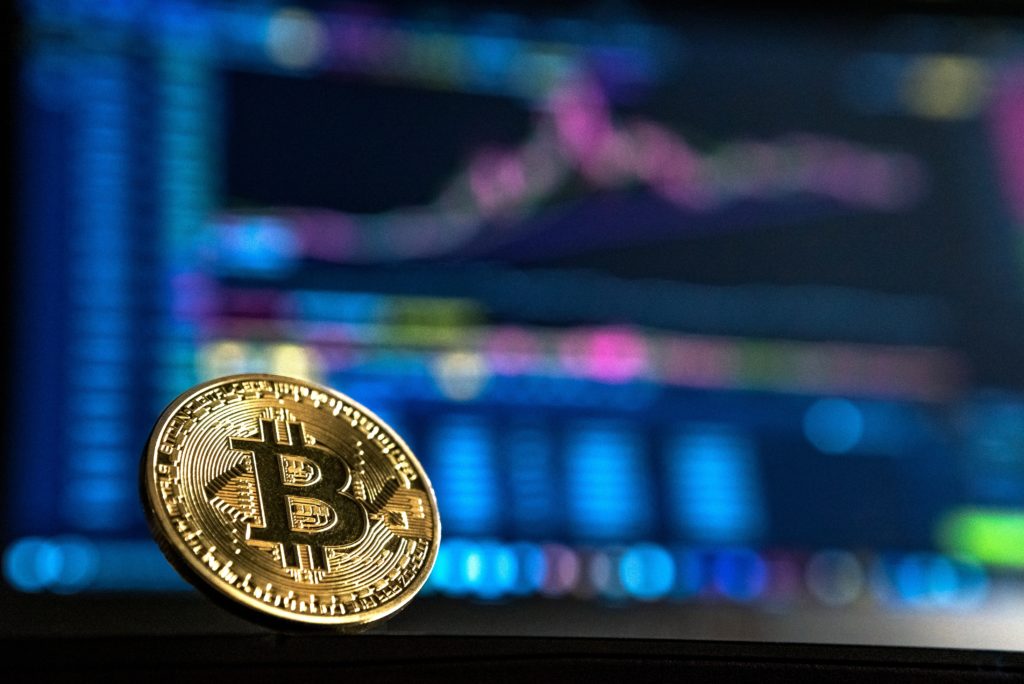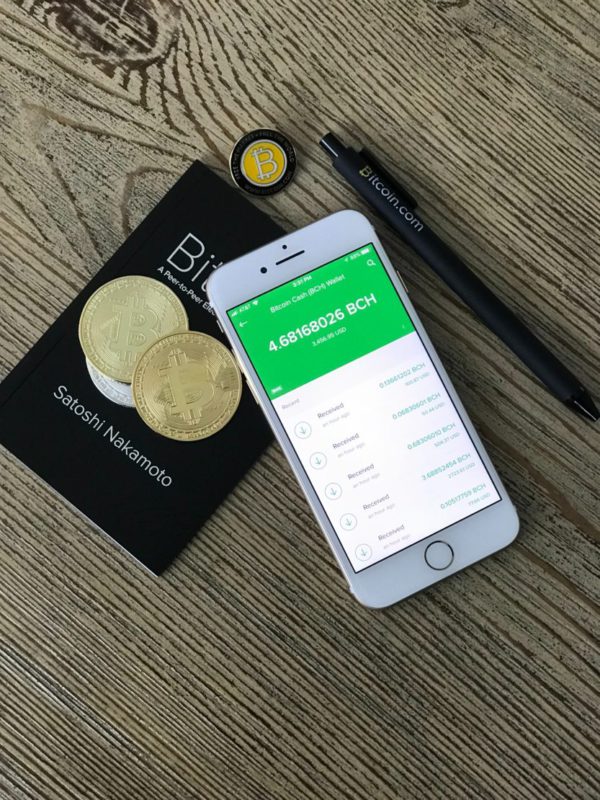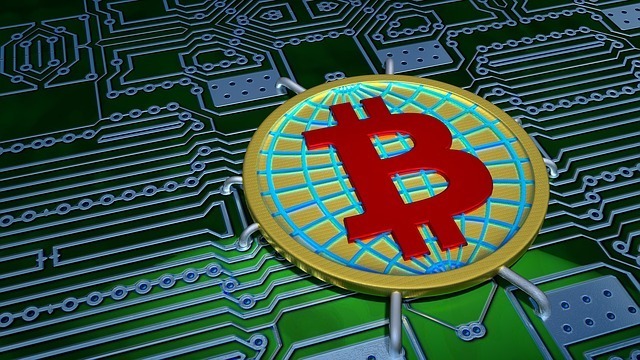Top 10 Amazing Ways Bitcoin’s Security Will Enhance The NFT Market
Non-Fungible Tokens (NFTs) have taken the world by storm. These unique digital assets, representing ownership of everything from artwork to virtual land, have captured the imagination of collectors, investors, and even established brands. However, the NFT market remains nascent, facing challenges related to security, scalability, and user experience. This is where Bitcoin, the granddaddy of cryptocurrencies, steps in. Bitcoin’s security infrastructure could potentially act as a bedrock for a more secure and trustworthy future for NFTs.
The NFT Security Challenge: A House Built on Sand?
Currently, the NFT landscape is fragmented. NFTs can be minted (created) on various blockchains, each with its own security protocols and levels of decentralization. Some popular NFT blockchains, while innovative, are still relatively young and haven’t had the time to battle-test their security against sophisticated attacks. This raises concerns about the potential for fraud, forgery, and manipulation within the NFT market.
Imagine a scenario where an attacker hacks into a less secure blockchain and mints fake versions of valuable NFTs. This could erode trust in the entire NFT ecosystem, causing significant financial losses for collectors and investors.
Bitcoin’s Security: A Fort Knox for the Digital Age
Bitcoin, on the other hand, boasts a time-tested security record. Its blockchain, secured by a vast network of miners, has proven remarkably resistant to hacking attempts. This robust security infrastructure could potentially offer significant advantages to the NFT market.
Here’s how Bitcoin’s security could enhance the future of NFTs:
-
Enhanced Trust and Transparency: By leveraging Bitcoin’s blockchain for NFT minting and transactions, the NFT market could benefit from its established security protocols. This could instill greater trust and confidence among collectors and investors, attracting a wider audience.
-
Reduced Risk of Fraud: Bitcoin’s secure blockchain makes it significantly harder to forge or manipulate NFTs. This can help mitigate the risk of fraud and scams, protecting users from financial losses.
-
Improved Scalability: While Bitcoin itself struggles with scalability issues, advancements like the Lightning Network offer potential solutions for faster and more efficient NFT transactions.
Top 10 Amazing Ways Bitcoin’s Security Will Enhance The NFT Market
The worlds of Bitcoin and NFTs might seem distinct, but Bitcoin’s robust security infrastructure holds the potential to significantly enhance the NFT market in fascinating ways. Here’s a deep dive into 10 incredible possibilities:
-
Immutability for Trustworthy Ownership: Bitcoin’s blockchain is renowned for its immutability – transactions are irreversible and the record of ownership is tamper-proof. This very feature can be leveraged to bolster trust in the NFT market. By anchoring NFT ownership data onto the Bitcoin blockchain, creators and collectors can gain an extra layer of confidence. Imagine a rare digital artwork’s ownership history permanently etched on the Bitcoin blockchain, eliminating concerns about forgery or manipulation.
-
Enhanced Security for NFT Marketplaces: Security breaches on NFT marketplaces can be devastating. Bitcoin’s proven security model, incorporating features like Proof-of-Work and distributed ledger technology, can inspire the development of more secure NFT marketplace infrastructures. By integrating elements of Bitcoin’s security protocols, NFT marketplaces can potentially offer a more robust environment for transactions, protecting valuable digital assets.
-
Decentralized Storage Solutions: Currently, many NFTs rely on centralized storage solutions, creating a single point of failure. Bitcoin’s decentralized nature paves the way for the exploration of decentralized storage solutions for NFTs. Imagine a future where NFT data is immutably stored on the Bitcoin blockchain itself, eliminating reliance on potentially vulnerable centralized servers and further enhancing security.
-
Synergistic Identity Management: Bitcoin wallets are a cornerstone of user identity within the crypto space. By leveraging existing Bitcoin wallet infrastructure, NFT marketplaces could offer a more secure and streamlined user experience. Imagine a seamless login process for NFT platforms that utilizes existing Bitcoin wallets, eliminating the need for separate accounts and passwords, thereby reducing the risk of identity theft or account compromise.
-
Improved Cross-Chain Interoperability: Currently, NFTs often reside on specific blockchains, limiting interoperability between different NFT marketplaces. Bitcoin’s established network effect can pave the way for the development of interoperable solutions. By leveraging Bitcoin’s blockchain as a neutral ground, different NFT ecosystems could potentially achieve greater interoperability, allowing for smoother NFT transfers across platforms.
-
Combating Counterfeiting and Fraud: The NFT market is susceptible to counterfeiting and fraudulent activities. Bitcoin’s robust transaction verification process can inspire the development of more sophisticated anti-fraud measures for NFTs. By incorporating elements of Bitcoin’s verification system, NFT platforms could potentially identify and eliminate counterfeit NFTs with greater accuracy, protecting both creators and collectors.
-
Enhanced Transparency and Auditability: Bitcoin’s transparent ledger system allows anyone to view transaction history. This very feature can be adapted to enhance transparency within the NFT market. Imagine a future where the complete ownership history and provenance of an NFT are readily available on the Bitcoin blockchain, fostering greater trust and facilitating due diligence for potential buyers.
-
Boosting Scarcity Perception: Bitcoin’s limited supply is a core element of its value proposition. By anchoring NFTs to the Bitcoin blockchain, creators can explore ways to leverage Bitcoin’s established scarcity dynamics. Imagine limited edition NFT collections whose issuance is tied to specific Bitcoin block heights, inheriting a sense of scarcity directly from Bitcoin’s core principles.
-
The Rise of Security Tokenized NFTs (STNFTs): Security tokens represent real-world assets on the blockchain. Imagine NFTs that not only represent digital art but also function as a fractional ownership stake in a physical asset like a piece of real estate, secured by the Bitcoin blockchain. This convergence, powered by Bitcoin’s security, could unlock entirely new possibilities for the NFT market.
-
Building Trust in the Broader Crypto Ecosystem: Bitcoin’s established security record lends credibility to the entire crypto space. As Bitcoin’s security continues to evolve and gain wider acceptance, it can have a positive halo effect on the NFT market. Increased trust in the underlying technology can attract new investors and collectors to the NFT market, fostering its overall growth and adoption.
Beyond the Hype:
It’s important to acknowledge that integrating Bitcoin’s security features with the NFT market will require significant technical innovation and collaboration. Additionally, regulatory landscapes surrounding both Bitcoin and NFTs are still developing. However, the potential benefits are undeniable. By leveraging Bitcoin’s security infrastructure, the NFT market can evolve into a more secure, trustworthy, and innovative space, paving the way for a flourishing future for digital ownership.
Also, read – DeFi Development: Top 10 Intriguing Security Considerations That Can’t Be Ignored
Challenges in Bitcoin’s Security to Enhance The NFT Market
While the potential for Bitcoin’s security to enhance the NFT market is exciting, there are significant challenges that need to be addressed before this vision becomes reality. Here’s a detailed exploration of these hurdles:
1. Scalability and Transaction Fees: Bitcoin’s security comes at a cost – its Proof-of-Work consensus mechanism leads to slow transaction processing and high fees. Integrating NFTs, which often involve frequent transfers and ownership changes, onto the Bitcoin blockchain could exacerbate these issues. Imagine an NFT marketplace built on Bitcoin struggling to handle large volumes of transactions, leading to delays and potentially exorbitant fees for NFT buyers and sellers.
2. Technical Integration Complexity: The technical integration of Bitcoin’s security features with existing NFT ecosystems presents a significant challenge. Implementing solutions like anchoring NFT ownership data onto the Bitcoin blockchain or leveraging Bitcoin’s verification process for NFTs will require complex technical development and adaptation of existing NFT infrastructure. This process won’t be quick or straightforward.
3. Decentralization vs. Security Trade-Offs: Bitcoin’s security relies on a vast network of miners. However, this very centralization raises concerns about potential manipulation and control. Implementing Bitcoin-inspired security measures for NFTs could introduce similar centralization aspects into the currently more decentralized NFT space. Striking a balance between security and decentralization will be crucial for maintaining the core values of both Bitcoin and NFTs.
4. Regulatory Uncertainty: Regulatory landscapes for both Bitcoin and NFTs are still evolving. Integrating Bitcoin’s security features with NFTs might create new regulatory complexities. Regulatory bodies might view such integration as a form of security tokenization, potentially leading to stricter regulations that could stifle innovation in both markets.
5. User Adoption and Awareness: For Bitcoin’s security to benefit the NFT market, mainstream users need to understand and appreciate its advantages. Educating a broader audience about the intricacies of Bitcoin’s security model and its relevance to NFTs will be a significant challenge. Without widespread user awareness, the potential benefits might not translate into real-world adoption.
6. Alternative Security Solutions: The NFT space is constantly innovating, and alternative security solutions are emerging. Sidechains, layer-2 scaling solutions, and other blockchain advancements might offer ways to enhance NFT security without relying solely on Bitcoin. The viability of Bitcoin-based security solutions will need to compete with these evolving alternatives.
7. Environmental Impact Concerns: Bitcoin’s Proof-of-Work consensus mechanism raises concerns about its environmental impact. If integrating Bitcoin security features leads to increased network activity, it could exacerbate these concerns. Sustainability-conscious creators and collectors might be hesitant to embrace solutions that come at an environmental cost.
8. Interoperability Hurdles: Different NFT ecosystems often operate on various blockchains. Integrating Bitcoin’s security features might not seamlessly solve interoperability challenges. Additional technical solutions might be necessary to ensure that NFTs secured by Bitcoin can interact smoothly with NFT platforms built on other blockchains.
9. Limited Smart Contract Functionality: Bitcoin’s scripting language is relatively limited compared to platforms like Ethereum, which power most NFTs. Implementing complex functionalities for NFTs, such as royalties or programmed ownership transfers, might be challenging when relying solely on Bitcoin’s security features. Alternative approaches or hybrid solutions might be needed.
10. The Risk of Reliance: Over-reliance on Bitcoin’s security could create a single point of failure for the NFT market. If a vulnerability is discovered in Bitcoin’s security model, it could potentially impact the security of NFTs anchored to the Bitcoin blockchain. Exploring a more diversified approach to security, incorporating advancements from other blockchains, might be prudent.
The Road Ahead:
Despite the challenges, the potential benefits of leveraging Bitcoin’s security for the NFT market remain substantial. By overcoming these hurdles through technical innovation, collaboration, and a focus on user education, the future of NFTs could be significantly enhanced by the robust security infrastructure of Bitcoin. As both technologies continue to evolve, finding creative solutions to these challenges will pave the way for a more secure and thriving digital ownership landscape.
Conclusion: A Symbiotic Relationship
The dance between Bitcoin and NFTs is a captivating one, unfolding with fascinating possibilities. While they may appear as separate entities, their destinies are intricately linked. Bitcoin, the established titan, offers a battle-tested security infrastructure, while NFTs, the dazzling newcomers, bring innovation and a vast array of use cases. By fostering a symbiotic relationship, these two forces can propel the entire cryptocurrency space forward.
A Secure Foundation for Innovation:
Bitcoin’s robust security model, built on the bedrock of immutability and decentralization, can provide a much-needed security boost to the NFT market. Imagine a future where NFT ownership data is anchored onto the Bitcoin blockchain, offering an unparalleled level of trust and eliminating concerns about forgeries or manipulation. This enhanced security can attract more creators and collectors, fostering a vibrant and secure environment for digital ownership to flourish.
Scalability and Efficiency:
However, Bitcoin’s current limitations in scalability and transaction fees pose a challenge for large-scale NFT adoption. Here’s where innovation comes in. By leveraging advancements in layer-2 scaling solutions and exploring alternative security models inspired by Bitcoin, the NFT market can achieve the necessary efficiency without compromising on security.
A Bridge to the Mainstream:
The combined force of Bitcoin’s established reputation and the dynamic world of NFTs has the potential to bridge the gap between the crypto space and the mainstream. As both technologies evolve and gain wider acceptance, the concept of digital ownership will become more familiar and accessible. This can lead to a surge in mainstream adoption, attracting new investors and collectors who can benefit from the unique value propositions offered by both Bitcoin and NFTs.
The Rise of Hybrid Solutions:
The future is likely to see a rise in hybrid solutions that combine the best of both worlds. Imagine an NFT marketplace that utilizes Bitcoin’s security for core ownership data while leveraging a different blockchain for faster transactions and more complex smart contract functionalities. Such a hybrid approach can optimize both security and usability, leading to a more robust and user-friendly NFT ecosystem.
The Evolving Regulatory Landscape:
As the relationship between Bitcoin and NFTs matures, regulatory landscapes will undoubtedly evolve. Collaborative efforts between regulatory bodies, industry leaders, and developers will be crucial in establishing clear and consistent regulations that foster innovation while protecting consumers. By navigating the regulatory landscape together, both Bitcoin and NFTs can thrive in a responsible and sustainable manner.
A New Era for the Creator Economy:
The convergence of Bitcoin’s security and NFT innovation has the potential to revolutionize the creator economy. Imagine a future where artists, musicians, and content creators can leverage NFTs to securely own and monetize their work, while collectors benefit from a transparent and verifiable ownership experience. This symbiotic relationship can empower creators and reshape the way value is exchanged in the digital age.
Looking Ahead:
The future of Bitcoin and NFTs is brimming with possibilities. By fostering a symbiotic relationship, these two forces can pave the way for a more secure, innovative, and inclusive digital asset ecosystem. The potential to unlock entirely new use cases and empower individuals through digital ownership is truly exciting. As this captivating dance unfolds, one thing is certain: the world of digital assets is poised for a period of transformative growth, driven by the intertwined destinies of Bitcoin and NFTs.
Stay informed with daily updates from Blockchain Magazine on Google News. Click here to follow us and mark as favorite: [Blockchain Magazine on Google News].
Get Blockchain Insights In Inbox
Stay ahead of the curve with expert analysis and market updates.
latest from tech
Disclaimer: Any post shared by a third-party agency are sponsored and Blockchain Magazine has no views on any such posts. The views and opinions expressed in this post are those of the clients and do not necessarily reflect the official policy or position of Blockchain Magazine. The information provided in this post is for informational purposes only and should not be considered as financial, investment, or professional advice. Blockchain Magazine does not endorse or promote any specific products, services, or companies mentioned in this posts. Readers are encouraged to conduct their own research and consult with a qualified professional before making any financial decisions. The featured image used is just a creative depiction of the title and it does not intend to hurt sentiments of any person or institution. If it hurts anyone sentiments, please do not hesitate to reach out to Blockchain Magazine.

 Bitcoin
Bitcoin  Ethereum
Ethereum  XRP
XRP  Tether
Tether  Solana
Solana  USDC
USDC  Dogecoin
Dogecoin  Cardano
Cardano  Lido Staked Ether
Lido Staked Ether  TRON
TRON  Wrapped Bitcoin
Wrapped Bitcoin  Wrapped stETH
Wrapped stETH  Chainlink
Chainlink  Avalanche
Avalanche  Sui
Sui  Stellar
Stellar  Litecoin
Litecoin  Toncoin
Toncoin  Shiba Inu
Shiba Inu  Hedera
Hedera  LEO Token
LEO Token  USDS
USDS  MANTRA
MANTRA  Hyperliquid
Hyperliquid  WETH
WETH  Polkadot
Polkadot  Bitcoin Cash
Bitcoin Cash  Bitget Token
Bitget Token  Ethena USDe
Ethena USDe  Wrapped eETH
Wrapped eETH  Uniswap
Uniswap  Monero
Monero  NEAR Protocol
NEAR Protocol  Pepe
Pepe  WhiteBIT Coin
WhiteBIT Coin  Aave
Aave  Bittensor
Bittensor  Ondo
Ondo  Aptos
Aptos  Internet Computer
Internet Computer  Dai
Dai  Official Trump
Official Trump  Ethereum Classic
Ethereum Classic  Mantle
Mantle  Tokenize Xchange
Tokenize Xchange  OKB
OKB  Gate
Gate  sUSDS
sUSDS  Coinbase Wrapped BTC
Coinbase Wrapped BTC 




